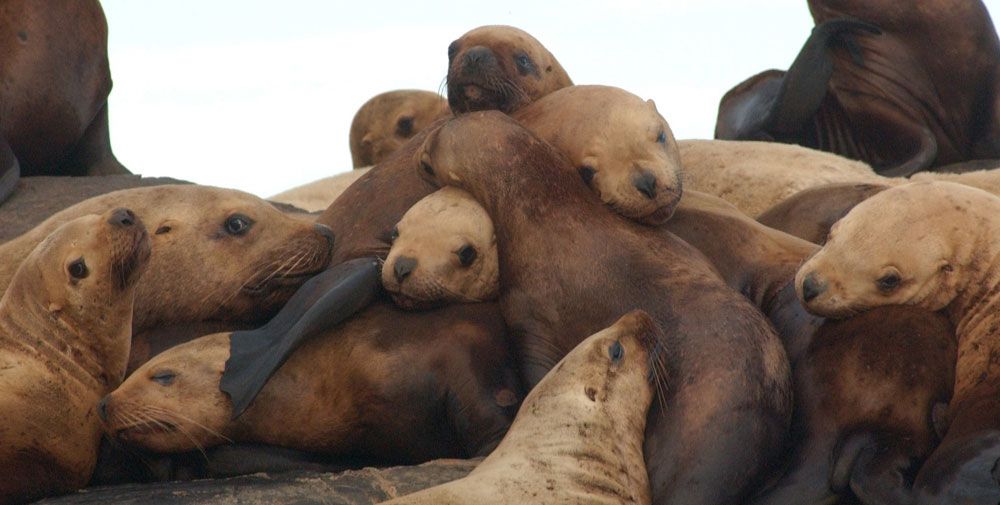
Sea Lions May Be Removed from Endangered Species List

The National Oceanic and Atmospheric Administration (NOAA) is proposing to delist the eastern Steller sea lion, found along the West Coast between Alaska and California, from the Endangered Species List after its biologists found that the species is making the necessary gains in population numbers.
The eastern population of Steller sea lions (Eumetopias jubatus), which ranges from Cape Suckling in Alaska to the Channel Islands off the coast of Southern California, is currently listed as "threatened" on the Endangered Species List.
Steller sea lions, the largest of the eared seals, were first added to the Endangered Species List in 1990 because of steep declines in their population; humans who felt the animals were eating their fishing catch shot them. Outreach and education has largely stopped the shootings, according to a NOAA statement.
There were about 34,000 eastern Steller sea lions in 1997. Estimates from 2010 put the population at about 70,000 individuals.
Scientists think that the population has increased by about 4.3 percent per year since the late 1970s, NOAA said in a statement, thanks to increased awareness, decreased shootings, better population estimates and laws protecting the animals.
Sea lions can also be threatened by trash in the oceans.
NOAA began a draft review of the species in June 2010 and shortly received two petitions, one from the states of Washington and Oregon, and the other from the state of Alaska, asking that the eastern Steller sea lion be removed from threatened status under the Endangered Species Act.
Sign up for the Live Science daily newsletter now
Get the world’s most fascinating discoveries delivered straight to your inbox.
The review was completed in March and biologists found that the species met the requirements for recovery under the plan for the species.
A 60-day public comment period on the delisting began yesterday (April 18) and closes on June 18. Afterward, the agency will review comments and issue a final decision on the delisting proposal.
If the species is delisted, a monitoring plan will still be in place for the next 10 years.
The western group of the species, which is genetically distinct and ranges from Alaska to the Pacific coast of Russia, will retain its endangered classification.
This story was provided by OurAmazingPlanet, a sister site to LiveScience.
Most Popular




